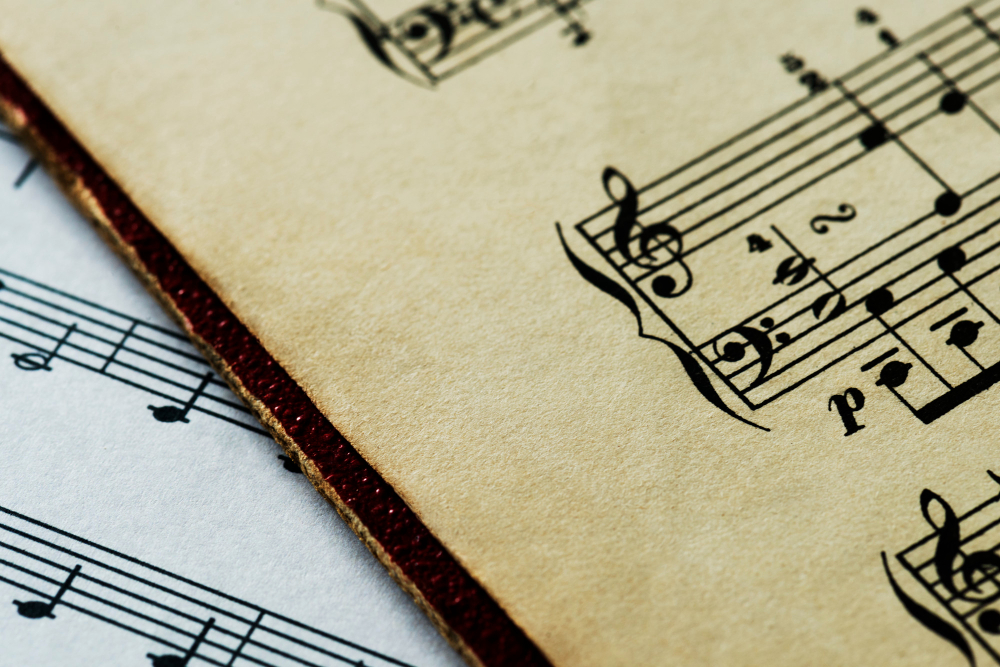The woodwind instrument family in an orchestra includes instruments such as the flute, oboe, clarinet, and bassoon. These instruments produce sound by blowing air over a reed or through a pipe and produce sound. Each instrument in the woodwind family has its own unique tone and range, allowing for a diversity of sounds within the woodwind section of the orchestra. They are often used to play solos and provide harmonious accompaniments in classical compositions. Woodwinds are versatile instruments, capable of playing a wide range of dynamics, from soft and delicate to strong and powerful, making them a vital component of an orchestra. Below are the main instruments belonging to the woodwind family:
Flute
The flute is a woodwind instrument that produces a bright and airy sound. It has a cylindrical bore and a single reed that vibrates to produce sound. The flute is played by blowing air across the opening of the instrument and using the fingers to cover and uncover the various holes. It is commonly used in classical, jazz, and folk music, and is played both as a solo instrument and as part of an ensemble.
Oboe
The oboe is a double reed woodwind instrument with a distinctive, reedy sound. It has a cylindrical bore and is played by blowing air into the double reed, causing it to vibrate and produce sound. The oboe is often used as a solo instrument in classical music and is also an important member of the orchestra. It has a distinctive, nasal quality that sets it apart from other instruments and is used to add color and depth to the musical texture.
Clarinet
The clarinet is a single reed woodwind instrument that produces a wide range of sounds, from bright and clear to rich and warm. It has a cylindrical bore and is played by blowing air into the single reed, causing it to vibrate and produce sound. The clarinet is a versatile instrument used in classical, jazz, and folk music. It has a unique sound that ranges from mellow to piercing, and is often used as a lead instrument in jazz and swing music.
Bass Clarinet
The bass clarinet is a woodwind instrument that produces a deep, rich sound. It is similar in shape to the standard clarinet but is larger and has a longer tube. Bass clarinets typically play in the lower register and can add a deeper, warmer tone to the orchestra. The bass clarinet is used in classical and jazz music, and is considered an essential part of a modern symphony orchestra.
Bassoon
The bassoon is a double reed woodwind instrument that produces a deep, rich sound. It has a conical bore and is played by blowing air into the double reed, causing it to vibrate and produce sound. The bassoon is an important member of the orchestral ensemble and is also used in chamber music and as a solo instrument. It has a distinctive tone that is often used to add a warm and grounding quality to the musical texture, and is known for its ability to blend with other instruments and create a harmonious sound.
Contrabassoon
The contrabassoon, also known as the double bassoon, is the largest and lowest-pitched member of the bassoon family. It produces a deep, rich sound and typically provides the bass line in orchestral music. The contrabassoon is a challenging instrument to play, as it requires a great deal of breath control and precision. Its large size and unique sound make it a distinctive and important part of the orchestra.
Piccolo
The piccolo is a small, high-pitched flute that plays an octave higher than the standard flute. It is commonly used in orchestral and military band music to add brightness and clarity to the upper register. The piccolo is a critical component in creating a brighter overall sound in orchestras and adds a piercing tone to military band music.
Cor anglais/English Horn
The English horn, also known as the Cor anglais, is a double reed instrument and a member of the oboe family. It has a distinct, warm, and rich sound and is often used in orchestral music to provide a unique contrast to the oboe. The English horn is typically used in orchestral pieces to provide a haunting, melancholic sound, especially in romantic and film music.
Recorder
The recorder is a cylindrical, fipple flute that is similar to the whistle. It has a simple design and is commonly used in early music and educational settings. The recorder produces a bright and airy sound, and it is often used in ensemble music to add a folksy, Renaissance-era flavor. The recorder is a popular instrument for beginner musicians because of its ease of use and simplicity, making it a great instrument to introduce children to music.
Saxophone
The saxophone is a woodwind instrument with a single-reed mouthpiece, cylindrical bore, and conical shape. It was invented by Adolphe Sax in the 1840s and is now commonly used in jazz, classical, and popular music. Saxophones come in various sizes and are classified as either alto, tenor, baritone, soprano, or bass. The saxophone is known for its smooth and soulful sound and has a wide range and ability to play both soft and loud passages.
Enrol for our one-on-one online piano classes to have access to a holistic music education programme that introduces students to important topics in the world of music and not just learning to play the piano.



